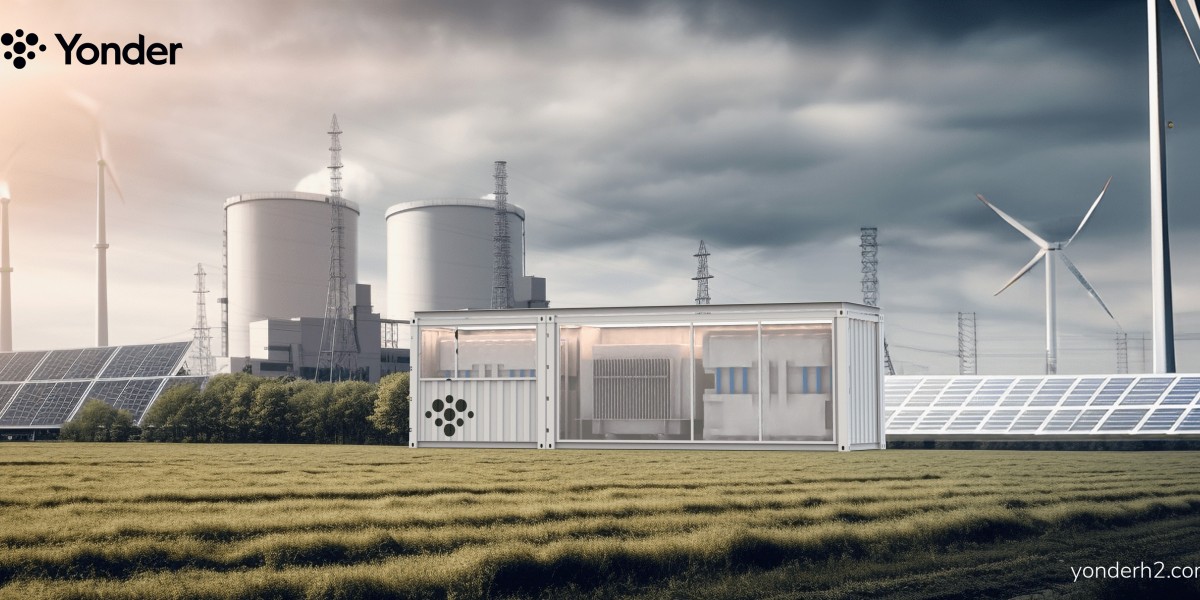As the world grapples with the pressing need to transition to cleaner energy sources, green hydrogen emerges as a powerful solution in the quest for a sustainable future. Produced using renewable energy sources, green hydrogen has the potential to transform industries, reduce carbon emissions, and drive global efforts toward a low-carbon economy. This article explores what green hydrogen is, its benefits, and its role in shaping a sustainable energy future.
What is Green Hydrogen?
Green hydrogen is hydrogen gas produced through a process called electrolysis, where water is split into hydrogen and oxygen using electricity from renewable energy sources such as wind, solar, or hydro power. Unlike conventional hydrogen production methods, which rely on fossil fuels and generate carbon dioxide emissions, green hydrogen is entirely carbon-free. This makes it an attractive option for decarbonizing various sectors of the economy.
How is Green Hydrogen Produced?
- Electrolysis: The primary method for producing green hydrogen is electrolysis, where water (H2O) is split into hydrogen (H2) and oxygen (O2) using electricity. The electricity used in this process comes from renewable sources like wind, solar, or hydro, ensuring that the hydrogen production is environmentally friendly.
- Renewable Energy Sources: To ensure the sustainability of green hydrogen, the electricity required for electrolysis must be derived from renewable energy sources. This prevents the introduction of greenhouse gases into the production process, making green hydrogen a truly clean energy carrier.
Benefits of Green Hydrogen
- Zero Carbon Emissions: The most significant advantage of green hydrogen is that it produces zero carbon emissions during production and use. This makes it a crucial component in efforts to combat climate change and reduce global greenhouse gas emissions.
- Energy Storage: Green hydrogen can be used to store excess energy produced from renewable sources. When renewable energy generation exceeds demand, this surplus can be used to produce hydrogen, which can be stored and utilized later, balancing supply and demand.
- Versatility: Green hydrogen can be used in a variety of applications, including:
- Energy Generation: It can be used as a fuel for power generation in fuel cells, which convert hydrogen into electricity with high efficiency.
- Transportation: Hydrogen fuel cells can power vehicles, including cars, buses, trucks, and even trains, offering a zero-emission alternative to fossil fuels.
- Industrial Processes: It can replace fossil fuels in industrial processes, such as steel production and chemical manufacturing, where it can act as a clean feedstock.
- Economic Opportunities: The growth of the green hydrogen sector presents significant economic opportunities, including job creation, technological innovation, and new business ventures. Investments in green hydrogen infrastructure and technology can stimulate economic development and drive growth in the clean energy sector.
Challenges and Solutions
- Cost: Currently, green hydrogen is more expensive to produce than hydrogen from fossil fuels. However, technological advancements, economies of scale, and increased investment in renewable energy infrastructure are expected to reduce costs over time.
- Infrastructure: Developing infrastructure for hydrogen production, storage, and distribution is a challenge. Investments in infrastructure and advancements in hydrogen storage technologies are crucial for scaling up green hydrogen use.
- Efficiency: Improving the efficiency of electrolysis and other hydrogen production methods is essential for making green hydrogen more viable. Ongoing research and development aim to enhance the efficiency and performance of these technologies.
Global and Regional Initiatives
Countries around the world are recognizing the potential of green hydrogen and are implementing strategies to promote its development:
- India: Making strides in the green hydrogen company in India sector with its National Green Hydrogen Mission, which aims to position the country as a global leader in hydrogen production and utilization.
- European Union: The EU has launched the European Hydrogen Strategy, which aims to scale up hydrogen production, develop infrastructure, and promote the use of hydrogen in various sectors.
- Japan: Japan is investing heavily in hydrogen technology and infrastructure, with initiatives such as the Hydrogen Roadmap and partnerships with other countries to advance hydrogen technology.
- United States: The U.S. is focusing on green hydrogen as part of its clean energy strategy, with federal and state-level initiatives supporting research, development, and deployment of hydrogen technologies.
The Future of Green Hydrogen
The future of green hydrogen looks promising, with ongoing advancements in technology, decreasing costs, and increasing investment. As countries and industries continue to embrace green hydrogen, it will play a critical role in achieving climate goals, reducing reliance on fossil fuels, and driving the transition to a sustainable energy future.
Green hydrogen has the potential to be a cornerstone of a clean energy economy, offering a versatile, zero-emission solution that can be applied across various sectors. By addressing the challenges and harnessing its benefits, green hydrogen can help build a more sustainable and resilient energy system for generations to come.
Conclusion
Green hydrogen represents a vital component of the global effort to transition to a cleaner, more sustainable energy future. With its zero carbon emissions, versatility, and potential for economic growth, green hydrogen offers a promising path towards reducing greenhouse gas emissions and achieving climate goals. As technology advances and investments grow, green hydrogen will become an increasingly important part of the energy landscape, driving progress towards a more sustainable world.



